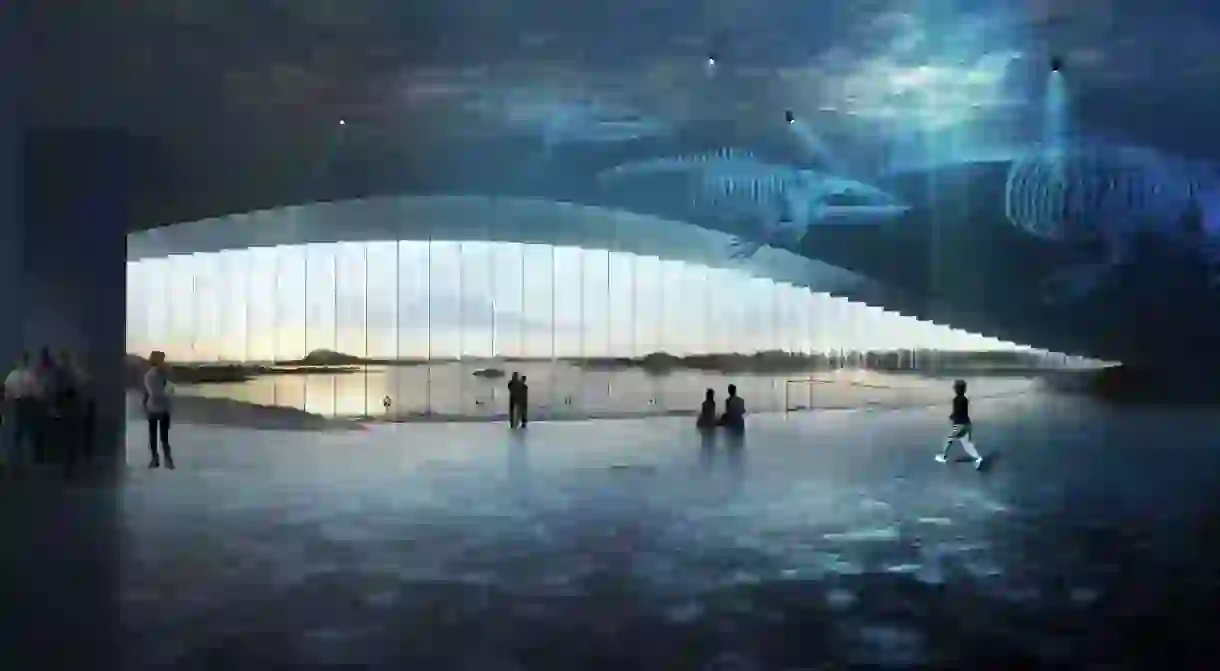A New Project Pays Homage to the Migrating Whales of Andøya, Norway

Every year, 50,000 people visit a small town in Norway to experience whales in the wild. A new building celebrates the ocean-living mammals, drawing inspiration from their shape and the beautiful nature that surrounds them.
Whales are among the most majestic creatures on Earth, but few people are lucky enough to get to see them in the wild. A new project on the Norwegian island of Andøya, 300 km north of the Arctic Circle, could change that. The Whale, by Danish architecture firm Dorte Mandrup, is a singular building for whale watchers and will feature exhibition spaces, offices, a café and a store when it’s completed in 2022.
The building, rising up from the stony shore of the archipelago, will also function as a viewpoint from which to see the migrating whales that visit the small town of Andenes on Andøya each year. It resembles a gigantic whale’s tail. The firm’s founder and creative director, Dorte Mandrup, says: “We’re at our best when working with spectacular and sensitive landscapes, and we feel both inspired and motivated by the great responsibility which comes along with creating architecture in the world’s irreplaceable places.”

Mandrup’s hands-on approach to her field is influenced by her studies in sculpture, ceramics and medicine, and The Whale strikes deep into her practice’s passion for science and nature. “To inform our design, we did thorough research of the ancient landscape and unique marine life surrounding the island,” Mandrup says. “Eventually, we translated this information into an artistic expression with a sculptural quality. It accentuates the tales of the deep sea just outside the rocky coast of Andøya.”
A single curved concrete shell was designed to form the roof of The Whale, giving the whole building a beautifully organic shape that makes it look like a soft hill. It fits perfectly into the surrounding landscape, which was crucial for the aesthetic of the museum. “The form of the roof is defined by three high points on the site, and the foundation is influenced by the landscape beneath it. The surface of the roof is covered with natural, unworked stones from the area. Large windows open towards the archipelago, showing the connection between landscape and building,” Mandrup explains. It’s an interesting design that has created a building that is unobtrusive and eye-catching at the same time.

Scandinavia is often at the forefront when it comes to sustainability, and as a Scandinavian studio, Dorte Mandrup has a focus on social, economic and environmental sustainability, especially when designing for delicate landscapes. “It has been of highest priority to create a design strengthening the sensitive landscape of Andenes – aesthetically, as well as environmentally,” says Mandrup.
“The result is a design that aesthetically dissolves the lines between landscape and building; and a building that will be built in natural materials that last a long time, are beautifully patinated and require a minimum of maintenance,” she says. The new building won’t just allow visitors to experience the beauty of whales at play, but it will also have a role in increasing the understanding of whales and the preservation and protection of marine life. “Architecture plays an important role in creating awareness about our Earth – and we believe awareness is an important catalyst for change,” Mandrup says.

Andøya currently welcomes 50,000 visitors per year and when The Whale opens it is set to become “a place that augments the monumental experience of nature and the landscape,” says Mandrup. “I have on several occasions been so lucky as to experience whales – both in connection with The Whale and our first Arctic project, The Icefjord Centre in Ilulissat, Greenland. It is always a humbling and overwhelming experience to observe these enormous creatures leap out of the water and share their magnificence with the world.”













